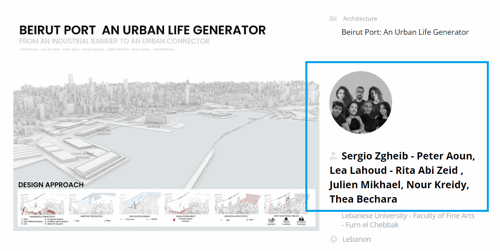Restoration Project of the Kazenny Wine Warehouse in Mariupol

Project idea
The inspiration for this project came from the devastated state of Mariupol after the 2022 military actions. The condition of the Kazenny Wine Warehouse, once a symbol of prosperity and now in ruins, was particularly striking. My visit to Mariupol and the realization of the loss of its historic environment motivated me to create a restoration project to revive the building’s architectural grandeur, adapt it to new functions, and preserve it for future generations
Project description
Scope of Application:
The restoration project of the Kazenny Wine Warehouse in Mariupol encompasses the following aspects:
1. Cultural Heritage and Historical Preservation:
The restoration aims to preserve the unique architectural and historical features of the building, contributing to the cultural identity of the city.
2. Hospitality and Tourism:
By adapting the building into a hotel complex, the project becomes a vital element in developing the city's tourist infrastructure, attracting visitors and creating new jobs.
3. Socio-Economic Revival:
The restoration of a damaged structure contributes to the broader process of urban recovery, revitalizing the district and attracting investor interest.
4. Educational and Research Purposes:
The project can serve as an example of successful historical building restoration and as a case study in educational programs focused on architecture, restoration, and urban planning.
5. Architectural Innovations:
The use of modern technologies and materials while maintaining the authenticity of the structure makes the project a model for blending tradition with innovation in restoration.
These aspects make the project relevant not only for Mariupol but also for other cities in need of historical urban environment restoration within contemporary realities.
Technical information
Technical Specification of the Project:
Object Dimensions:
Main building: 45 x 24 meters.
Total area of the factory block: 100 x 100 meters.
Building Structure:
Vaulted Monier construction: complete restoration of the original vaults, including decorative and structural elements.
Facade: restoration with preservation of the historical appearance, including brickwork, window, and door openings.
Interior spaces: adaptation to modern hotel standards while maintaining historical details.
Functional Zoning:
Hotel rooms: creation of comfortable conditions while preserving the historical features of the building.
Restaurants and cafes: creation of public spaces in former production areas.
Conference halls: adaptation of the space for business events.
Administrative premises: placement of office areas and reception in former administrative buildings.
Construction Materials:
Use of high-quality materials that comply with historical standards to restore the original appearance.
Special attention to selecting bricks similar to those used in the 19th century.
Application of modern technologies to strengthen structures and ensure their durability.
Engineering Systems:
Full replacement of outdated engineering networks with modern systems: heating, ventilation, water supply, electricity, and fire safety.
Implementation of energy-efficient technologies and solutions to reduce operational costs.
Implementation Stages:
Photo documentation and measurement of the territory to analyze the current state of the object.
Development of project documentation in accordance with modern construction and restoration standards.
Restoration of structural elements and facade.
Adaptation of interior spaces and installation of engineering systems.
Features:
Challenging implementation conditions: the military situation in Mariupol, limited access to the site, lack of complete archival documentation.
Negotiations with the local administration to approve the project and attract investments.
Goal: The restoration of the historical value of the building, its integration into the modern urban infrastructure, and the creation of a hotel complex that will become part of the new appearance of Mariupol.
The project aims to preserve architectural heritage, improve the urban environment, and enhance the tourism and economic appeal of the region.
















